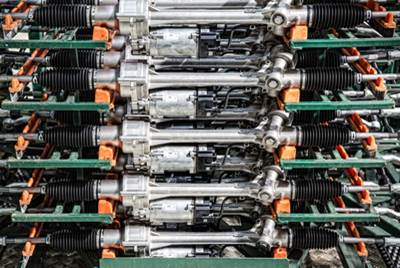Power steering is designed to help the driver maneuver car steering more easily and save effort in the whole move. When power steering was not introduced, a driver had to rely on his or her own physical force to make the steering wheel turn. Once one inputs a motion on the steering wheel, the power steering is activated. Wheel torque comes from hydraulic pump powered by the engine. Thus a little effort is needed on the driver’s part to turn the wheels. Power steering failure can lead to accident when it arises and takes one by surprise. If you are care enough for your car, there are a few tell-tale signs you can watch out for to figure out whether the power steering is failing.
Listen for Squealing
Squealing in any car is not usually a good sign and can be many different things. If you hear squealing when you sharply turn the steering wheel or when driving slowly this can indicate that the power steering pump is failing. When you start the car and you hear a clunking or chattering under the hood that can also be an indicator that the power steering pump is failing.
The Look of the Power Steering Fluid
When the power steering fluid is old it can cause the tubes that move the fluid to gum up which can lead to power steering failure. The power steering fluid will also tell you a lot about the power steering pump. New power steering fluid is colored red and the odor is very distinctive. Power steering fluid that has turned to dark gray this can indicate oxidation. If foaming or bubbles are present in the power steering fluid this will indicate water or air in the power steering line. Look for flakes of chrome in the power steering fluid. This will indicate degradation in the power steering pump.
Hard Steering
Look for increased effort in steering which may be accompanied by pump noise. Low oil can cause this to occur as well as a loose pump belt or bad power steering pump.
Check Fluid Levels
You should check the power steering fluid levels often. If the level of fluid is often low this can indicate a leak somewhere in the system. You usually can spot a leak in the power steering line after your car has been parked for some time. Once you move it look for red splashes. A low power steering fluid level can cause the pump to become noisy.
Drive Belts
A drive belt needs the right tension or it can cause the power steering pump to fail. The belt can slip off the drive train or break. This means the pulley is not properly working. Heat can also be transferred from the drive belt to the shaft and pulley system of the power steering pump. This will present itself in your car by steering that jumps or is choppy. When your car is idling and the steering wheel is vibrating violently this can be a sign that the drive belt is failing. Check the drive belt often for proper tension and cracks once a month.

5 Telling Signs of Power Steering Failure
by
Tags:

Leave a Reply